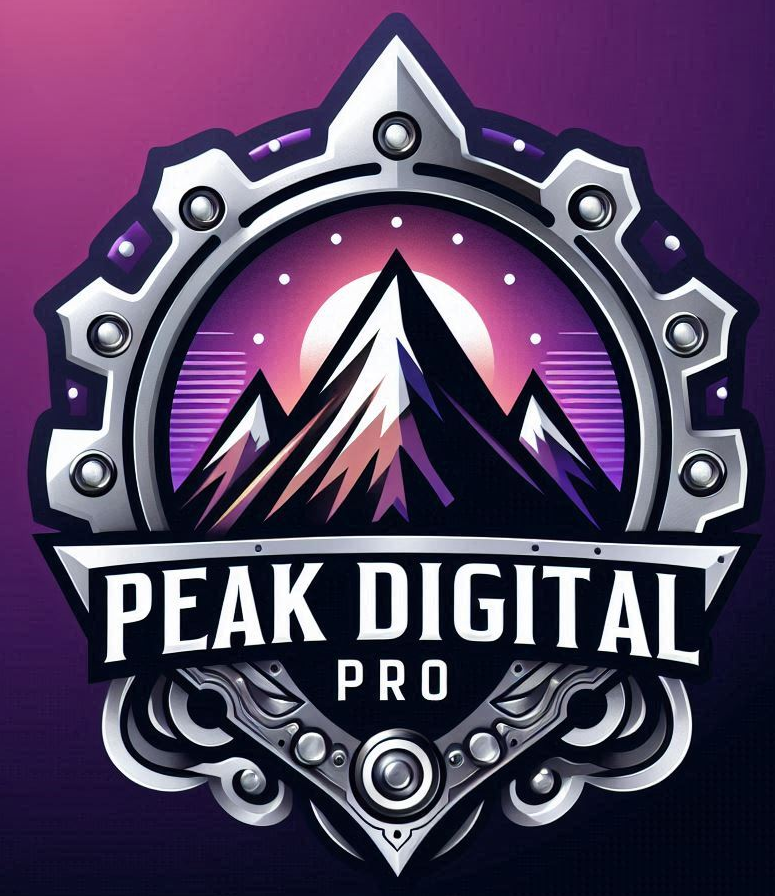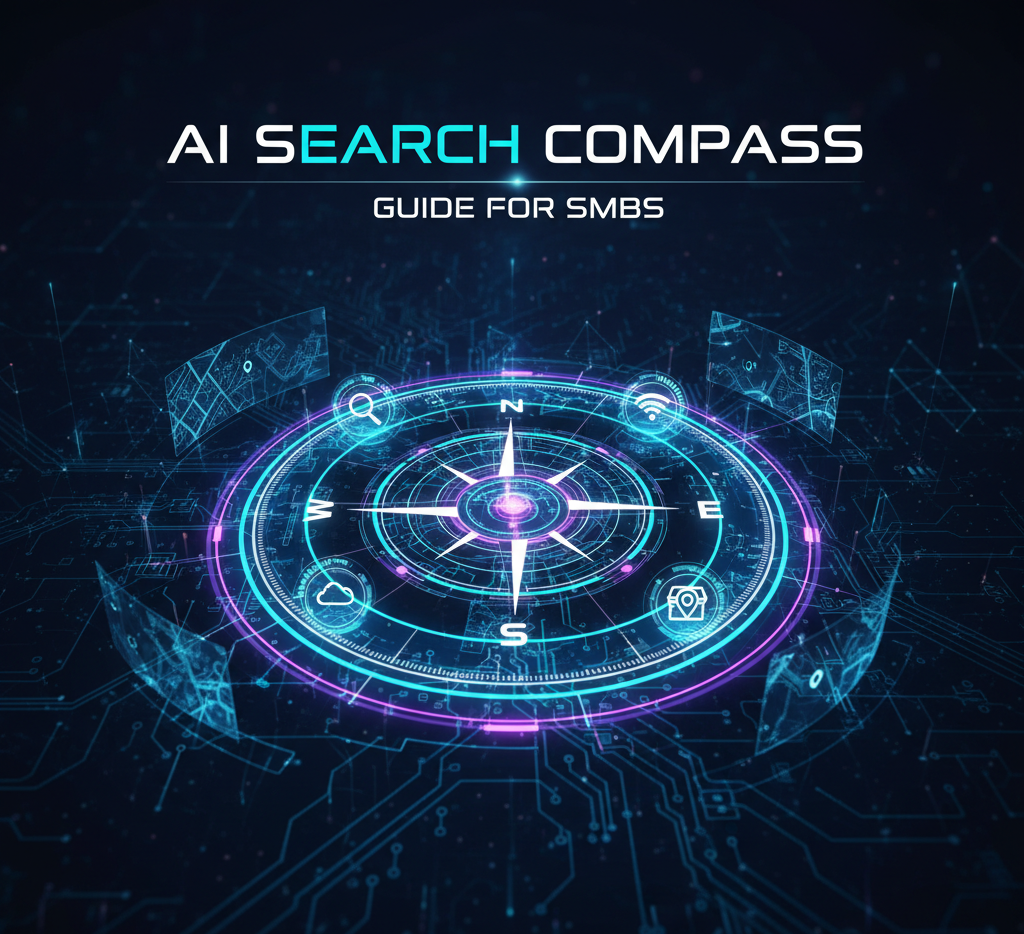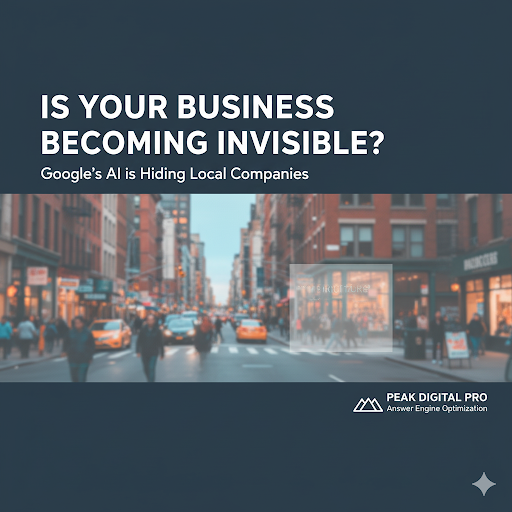How to Attract Customers: Top Strategies for U.S. and Colorado Businesses 2025

Attracting new customers has become more challenging than ever as competition grows and choices multiply. Yet, here’s a number that should make you pause: 47 percent of consumers say they actually prefer businesses that are locally owned . Surprised? Most people believe slick online campaigns and big budgets win customer loyalty, but real growth often starts much closer to home. The secret lies in building genuine connections within your own community.
Table of Contents
Quick Summary
| Takeaway | Explanation |
|---|---|
| Understand Your Local Customer Base | Research and analyze local customer characteristics to build authentic connections, as 47% of consumers prefer local businesses. |
| Integrate Online and Offline Marketing | Create a cohesive marketing ecosystem that utilizes both digital and traditional methods to reach customers at multiple touchpoints. |
| Focus on Customer Loyalty Through Service | Provide personalized experiences and responsive communication to transform transactions into long-term relationships and enhance customer loyalty. |
| Leverage Community Connections | Form strategic partnerships and engage with local initiatives to strengthen brand presence and build trust within the community. |
Understanding Your Local Customer Base
Successful businesses recognize that knowing your local customer base represents the foundation of targeted marketing and sustainable growth. This understanding goes beyond basic demographic information and requires a nuanced approach to comprehending the unique needs, preferences, and behaviors of your immediate community.
Mapping Local Customer Characteristics
Understanding your local customer base begins with comprehensive research and strategic analysis. McKinsey research reveals that 47% of consumers globally prioritize purchasing from locally owned companies, with 36% citing support for domestic businesses as their primary motivation. This statistic underscores the critical importance of developing a deep, authentic connection with local customers.
To effectively map customer characteristics, businesses must gather data through multiple channels. This includes analyzing purchase histories, conducting surveys, monitoring social media interactions, and tracking local engagement metrics. The goal is to build a multidimensional profile that captures not just who your customers are, but how they think, what they value, and what drives their purchasing decisions.
Below is a table summarizing different methods businesses can use to map local customer characteristics and what each method provides.
| Method | What It Provides |
|---|---|
| Purchase History Analysis | Insights into buying patterns and preferences |
| Customer Surveys | Direct feedback on needs, satisfaction, interests |
| Social Media Monitoring | Trends, sentiment, and engagement in real time |
| Local Engagement Tracking | Data on participation in events and initiatives |
| Demographic Data Collection | Age, income, background & key population details |
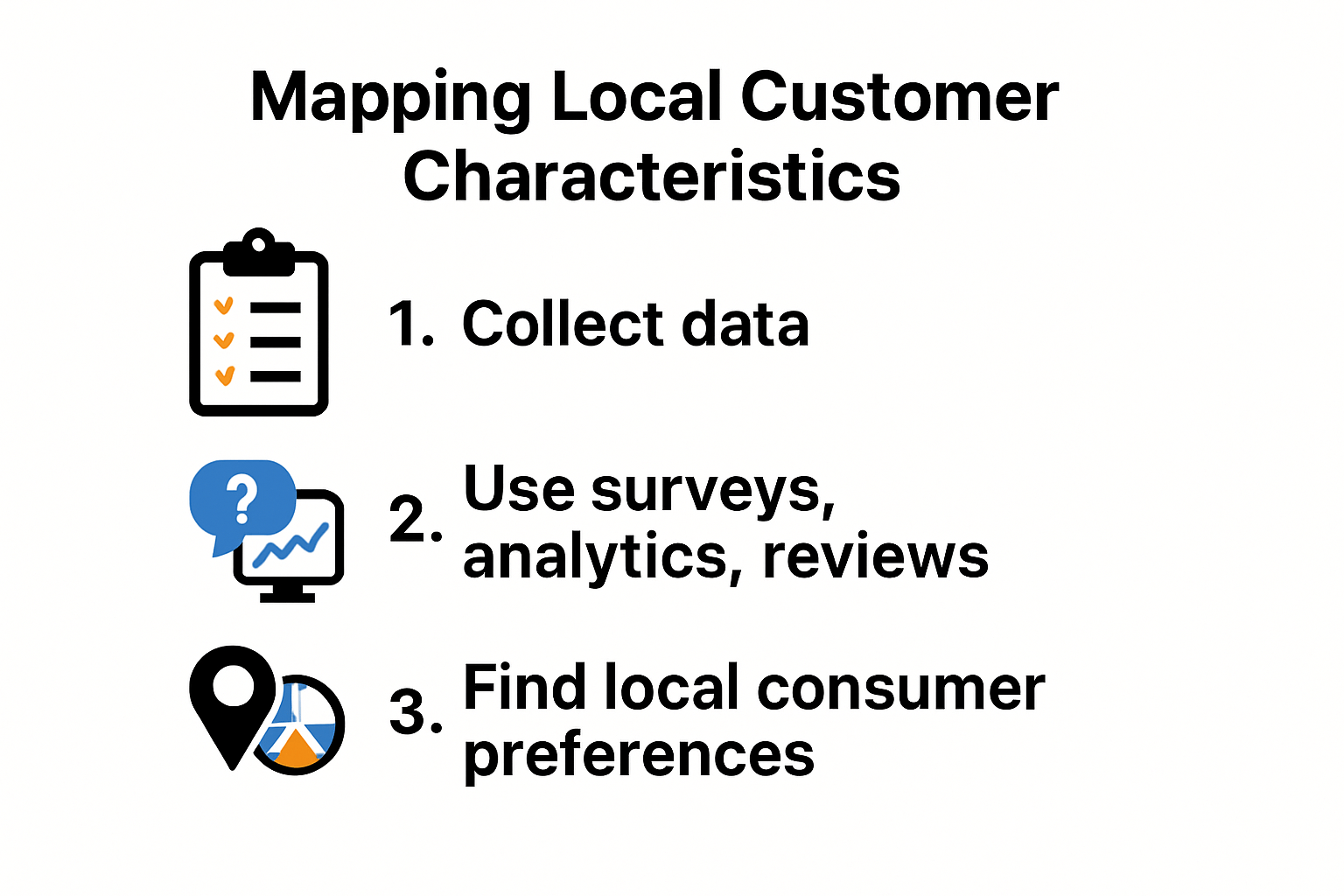
Community Engagement and Local Marketing Strategies
Forbes experts recommend that collaborating with local influencers can significantly enhance a business’s visibility and credibility within the community. This approach goes beyond traditional advertising by creating authentic connections that resonate with local audiences.
Strategic community engagement involves more than just marketing. It means participating in local events, sponsoring community initiatives, and demonstrating a genuine commitment to the area. These efforts not only build brand awareness but also establish your business as a trusted local entity. When customers see that a business actively contributes to the community, they are more likely to develop loyalty and choose that business over competitors.
Tailoring Experiences to Local Preferences
Customer preferences vary dramatically across different local markets. What works in one neighborhood might fall flat in another. Successful businesses adapt their offerings, messaging, and customer experience to reflect local nuances. This might involve adjusting product lines, creating location-specific promotions, or developing communication strategies that speak directly to local cultural contexts.
Technology now enables unprecedented levels of localization. Advanced analytics and AI-driven tools can help businesses segment their audience with incredible precision, allowing for hyper-targeted marketing approaches. By leveraging these technologies, businesses can create personalized experiences that make customers feel truly understood and valued.
Understanding your local customer base is not a one-time task but an ongoing process of listening, learning, and adapting. Businesses that commit to this continuous exploration will not just survive but thrive in an increasingly competitive marketplace.

Effective Online and Offline Marketing Tactics
Marketing strategies in 2025 demand a holistic approach that seamlessly integrates digital and traditional channels. Businesses must create comprehensive marketing ecosystems that reach customers through multiple touchpoints, maximizing visibility and engagement.
Digital Marketing Precision
Online marketing has evolved beyond simple website presence. Small Business Administration research highlights the importance of integrating multiple digital strategies to create a cohesive brand experience. Search engine optimization, targeted social media advertising, and content marketing form the core of effective digital outreach.
Precision targeting allows businesses to reach specific customer segments with unprecedented accuracy. Advanced analytics tools enable marketers to track customer interactions, understand behavior patterns, and create highly personalized marketing messages. This approach ensures that marketing resources are utilized efficiently, delivering maximum return on investment.
Bridging Online and Offline Experiences
Forbes experts suggest that successful marketing strategies now require a seamless integration of online and offline channels. Local networking events, community sponsorships, and traditional print materials can complement digital marketing efforts.
Physical marketing materials like brochures and flyers remain powerful tools for creating tangible connections with potential customers. Funds for Companies research indicates that print advertising can effectively target specific demographics, providing a personal touch that digital channels sometimes lack.
Below is a table comparing digital and offline marketing tactics as discussed, highlighting features and benefits of each approach.
| Tactic Type | Examples | Key Benefits |
|---|---|---|
| Digital | SEO, Social Media Ads, Content Marketing | Precise targeting, broad reach, analytics |
| Offline | Print Ads, Networking Events, Flyers | Personal touch, tangibility, local trust |
| Integration | QR Codes on Print, Event Promotions | Seamless experience, increased engagement |
Strategic Marketing Ecosystem
The most successful marketing approaches create a comprehensive ecosystem where digital and traditional methods reinforce each other. QR codes on print materials can direct customers to online resources. Social media can promote offline events. Email marketing can follow up on in-person interactions.
Businesses must think beyond individual marketing channels and create integrated experiences. This means developing consistent messaging across all platforms, ensuring that whether a customer encounters your brand online or offline, they receive a cohesive and compelling narrative.
Modern marketing is not about choosing between online or offline tactics. It is about creating a sophisticated, interconnected strategy that meets customers wherever they are, delivering value and building meaningful connections.
Building Customer Loyalty Through Service
Customer loyalty represents the cornerstone of sustainable business growth. In an era of increasing competition and rapidly changing consumer expectations, businesses must develop sophisticated strategies that transform transactional interactions into meaningful, long-term relationships.
The Science of Customer Satisfaction
Research spanning four decades conclusively demonstrates that customer satisfaction is a critical driver of loyalty behaviors, directly impacting a firm’s financial performance. This means businesses cannot simply meet basic expectations but must consistently exceed them.
Modern customer loyalty goes beyond traditional reward programs. It requires a holistic approach that integrates personalized experiences, responsive communication, and genuine value creation. Customers now seek brands that understand their unique needs and demonstrate commitment through every interaction.
Digital Engagement and Communication
Digital marketing research reveals that effective digital communication significantly enhances customer loyalty by facilitating immediate and transparent engagement. Businesses must leverage technology to create seamless, responsive customer experiences across multiple channels.
This means implementing robust customer relationship management systems, utilizing AI-powered chatbots for instant support, and creating personalized communication pathways. Quick response times, proactive problem solving, and genuine empathy are now fundamental expectations.
Service Innovation and Continuous Improvement
A comprehensive study in the Vietnamese banking sector highlighted how service innovation positively affects customer satisfaction. This principle applies universally across industries. Businesses must continuously evolve their service models, integrating new technologies, refining processes, and anticipating customer needs.
Innovation in service delivery means more than introducing new features. It involves deeply understanding customer pain points, eliminating friction in their experience, and creating intuitive, user-friendly interactions. Successful businesses view every customer touchpoint as an opportunity to demonstrate value and build trust.
True customer loyalty emerges when businesses move beyond transactional relationships and create genuine human connections. By combining technological sophistication with authentic, empathetic service, companies can transform casual customers into passionate brand advocates.
Leveraging Community Connections in Colorado
Colorado represents a unique business ecosystem where community connections can transform local enterprises from ordinary operations to thriving, interconnected networks. Understanding and strategically engaging with the local community becomes a critical competitive advantage for businesses seeking sustainable growth.
Strategic Local Partnerships
Colorado Business Magazine research highlights the immense potential of collaborative business strategies. Local businesses can create powerful synergies by forming strategic partnerships, sharing resources, and supporting each other’s growth objectives.
These partnerships extend beyond simple transactional relationships. They involve creating comprehensive support networks where businesses cross-promote, share client referrals, and develop joint marketing initiatives. For instance, a local coffee shop might partner with a nearby bakery to create unique combined offerings, simultaneously enhancing both businesses’ value propositions.
Utilizing State Business Resources
Colorado Small Business Development Center provides remarkable support for businesses seeking to strengthen their community connections. Their free, confidential advising services offer critical guidance in areas like business planning, market research, and community engagement strategies.
Businesses can leverage these resources to develop nuanced understanding of local market dynamics. The SBDC offers workshops, training programs, and networking events that help entrepreneurs build robust community relationships. These platforms enable businesses to learn from local success stories, understand regional economic trends, and develop targeted growth strategies.
The following table summarizes state business resources available to Colorado businesses and what each offers, as discussed in the content.
| Resource | Main Offerings |
|---|---|
| Small Business Development Center (SBDC) | Free advising, business planning, market research |
| SBDC Workshops & Training | Education on market trends, community engagement |
| SBDC Networking Events | Platforms for building local relationships/networks |
Community Impact and Brand Building
Successful Colorado businesses recognize that community engagement is not just a marketing strategy but a fundamental business philosophy. This means actively participating in local events, supporting community initiatives, and demonstrating genuine commitment to regional economic development.
Sponsoring local sports teams, participating in community fundraisers, and supporting educational programs are powerful ways to build brand recognition. These efforts go beyond traditional advertising by creating emotional connections with local consumers. When businesses show they care about the community’s well-being, they transform from mere service providers to valued community members.
The Colorado business landscape rewards authenticity and community involvement. Businesses that invest time, resources, and genuine effort into building meaningful local connections will discover that community support becomes their most powerful competitive advantage. By viewing community engagement as a core business strategy rather than an optional activity, enterprises can create sustainable, resilient business models deeply rooted in local ecosystems.
Frequently Asked Questions
What are the best strategies to attract customers to my business?
Integrating local marketing strategies, engaging with your community, and creating personalized customer experiences are essential. Understanding your local customer base and incorporating both digital and offline marketing tactics can significantly enhance your outreach.
How important is community engagement for attracting customers?
Community engagement is crucial. 47% of consumers prefer locally owned businesses, and actively participating in local initiatives and events builds trust and loyalty among potential customers.
What online marketing tactics should I focus on in 2025?
Focus on SEO, targeted social media advertising, and effective content marketing. Precision targeting and analytics-driven strategies can help you reach specific customer segments effectively.
How can I build customer loyalty through service?
To build loyalty, prioritize customer satisfaction by exceeding basic expectations. Create personalized experiences and maintain responsive communication through digital engagement, ensuring that customers feel valued at every interaction.
Ready to Become Your Community’s Local Market Leader?
One of the biggest challenges your Colorado business faces is building real trust while getting noticed in a crowded digital and local landscape. This article highlighted how understanding local customer preferences and developing an integrated marketing ecosystem can set you apart. If you have ever struggled to connect with your audience online or to make your business stand out in search results and social media, you are not alone. Too many businesses miss out on attracting new customers because their digital presence is not optimized and their marketing strategies are not built for today’s competitive environment.
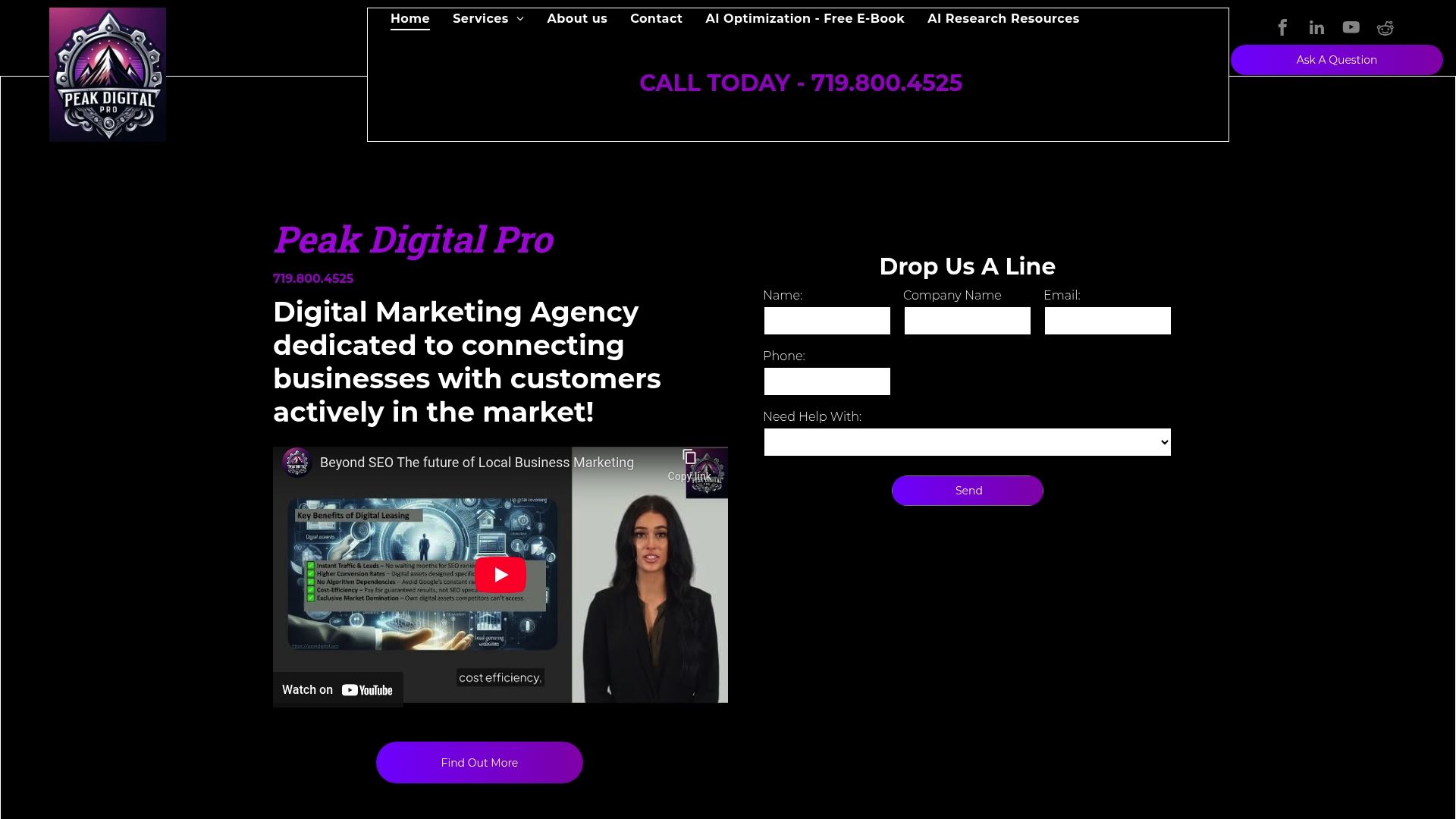
Take control of your growth now. Experience how Peak Digital Pro transforms these proven strategies into real results. With advanced web development, expert SEO, and smart advertising campaigns, we empower your brand to shine within your Colorado community and beyond. Do not wait while your competitors move ahead. Visit our site today and discover how you can attract more customers and become a true local leader.
